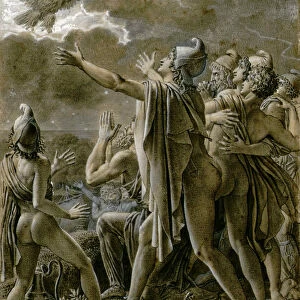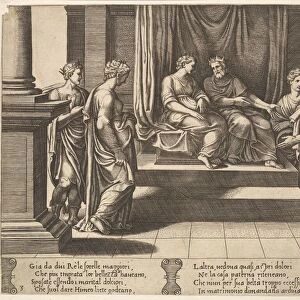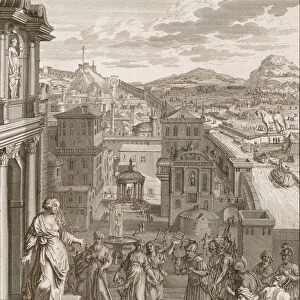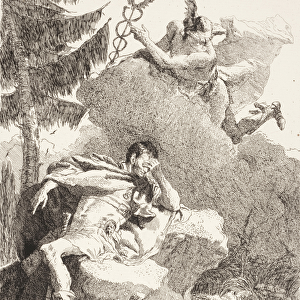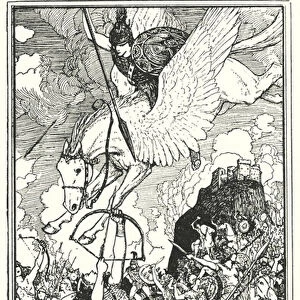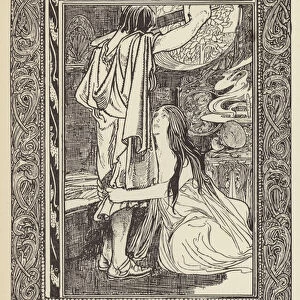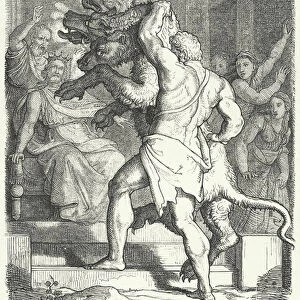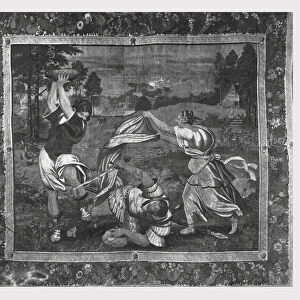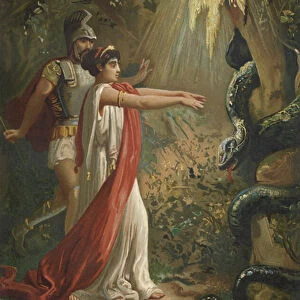Home > Arts > Artists > E > Etruscan Etruscan
Cloelia escapes back to Rome by swimming the Tiber

Wall Art and Photo Gifts from Mary Evans Picture Library
Cloelia escapes back to Rome by swimming the Tiber
Cloelia, given as a hostage to the Etruscan king, Lars Porsenna of Clusium, escapes back to Rome by swimming the Tiber, taking several other Roman girls with her
Mary Evans Picture Library makes available wonderful images created for people to enjoy over the centuries
Media ID 572710
© Mary Evans Picture Library 2015 - https://copyrighthub.org/s0/hub1/creation/maryevans/MaryEvansPictureID/10006555
Captive Captives Escape Escapes Escaping Etruscan Freedom Hostage Swimming Tiber Cloelia Lars Porsena Porsenna
EDITORS COMMENTS
In this image from ancient history, Cloelia, a brave Roman noblewoman, is depicted leading a group of Roman girls in their daring escape from Etruscan captivity. The scene unfolds along the banks of the Tiber River, with Cloelia, a hostage given to the Etruscan king Lars Porsenna of Clusium, leading her fellow captives back to Rome. The year is 508 BC, and Rome was under siege by the powerful Etruscan army, led by Porsenna. In a desperate bid to secure peace, the Romans offered their daughters as hostages. However, Cloelia, a woman of exceptional courage and determination, refused to be held captive any longer. With the Tiber River as their only means of escape, Cloelia and several other Roman girls took a calculated risk. They waited until nightfall, when the Etruscan guards were less vigilant, and then swam across the river to freedom. The girls managed to make it back to Rome, where they were hailed as heroes and welcomed with open arms. This historical event is a testament to the indomitable spirit of the ancient Romans and their unwavering commitment to their city. Cloelia's daring escape not only brought hope and inspiration to her people but also marked a significant turning point in Roman history. The Tiber River, which had once served as a barrier, became a symbol of freedom and a pathway to safety. This evocative print, from the extensive collection of Mary Evans Picture Library, offers a glimpse into the past, transporting us back to a time when courage, determination, and the will to survive shaped the course of history.
MADE IN THE USA
Safe Shipping with 30 Day Money Back Guarantee
FREE PERSONALISATION*
We are proud to offer a range of customisation features including Personalised Captions, Color Filters and Picture Zoom Tools
FREE COLORIZATION SERVICE
You can choose advanced AI Colorization for this picture at no extra charge!
SECURE PAYMENTS
We happily accept a wide range of payment options so you can pay for the things you need in the way that is most convenient for you
* Options may vary by product and licensing agreement. Zoomed Pictures can be adjusted in the Cart.



